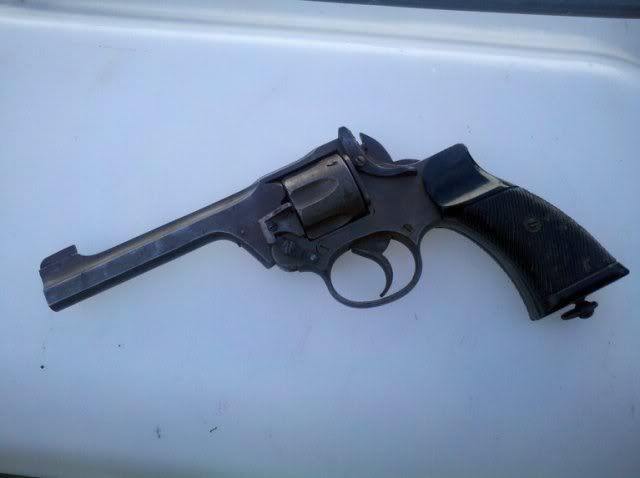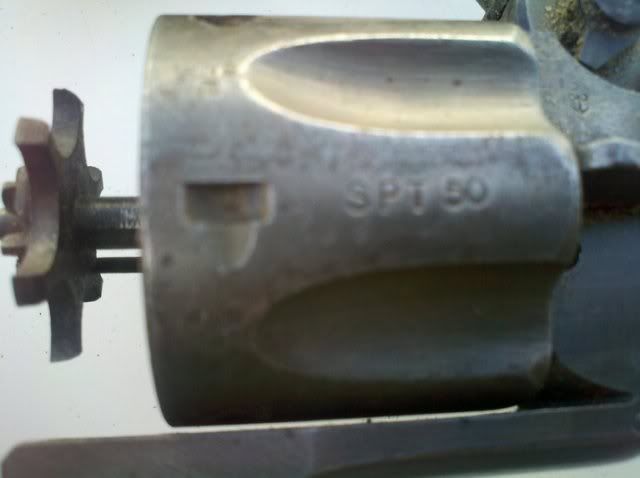Ok guys, I need some help identifying this old .38? break over revolver!
A good friend showed it to me today and told me it's story.
It was his Grandfather's gun originally and some how, someone pawned it. His father got wind it was about to be sold & purchased it to keep it in the family.
His Father is now getting up there in age so he brought it to his house to keep it from growing legs again!
Just doing a search now on line I have discovered it is a Webley or a Webley knock off, but I would still like any info and a value estimate. Even though the guy wouldn't sell it for 10x it's value, he still would get a kick out of knowing it.
Sorry for the bad cell phone pics but it's all I got!

I had very few markings on it, but here is a SPT50 on the cylinder.



This is the top of the barrel.

It is a .38 but it does not specify special.
I am old gun stupid so a caliber verification would be nice as well!
Thanks for any help!
A good friend showed it to me today and told me it's story.
It was his Grandfather's gun originally and some how, someone pawned it. His father got wind it was about to be sold & purchased it to keep it in the family.
His Father is now getting up there in age so he brought it to his house to keep it from growing legs again!
Just doing a search now on line I have discovered it is a Webley or a Webley knock off, but I would still like any info and a value estimate. Even though the guy wouldn't sell it for 10x it's value, he still would get a kick out of knowing it.
Sorry for the bad cell phone pics but it's all I got!

I had very few markings on it, but here is a SPT50 on the cylinder.



This is the top of the barrel.

It is a .38 but it does not specify special.
I am old gun stupid so a caliber verification would be nice as well!
Thanks for any help!
